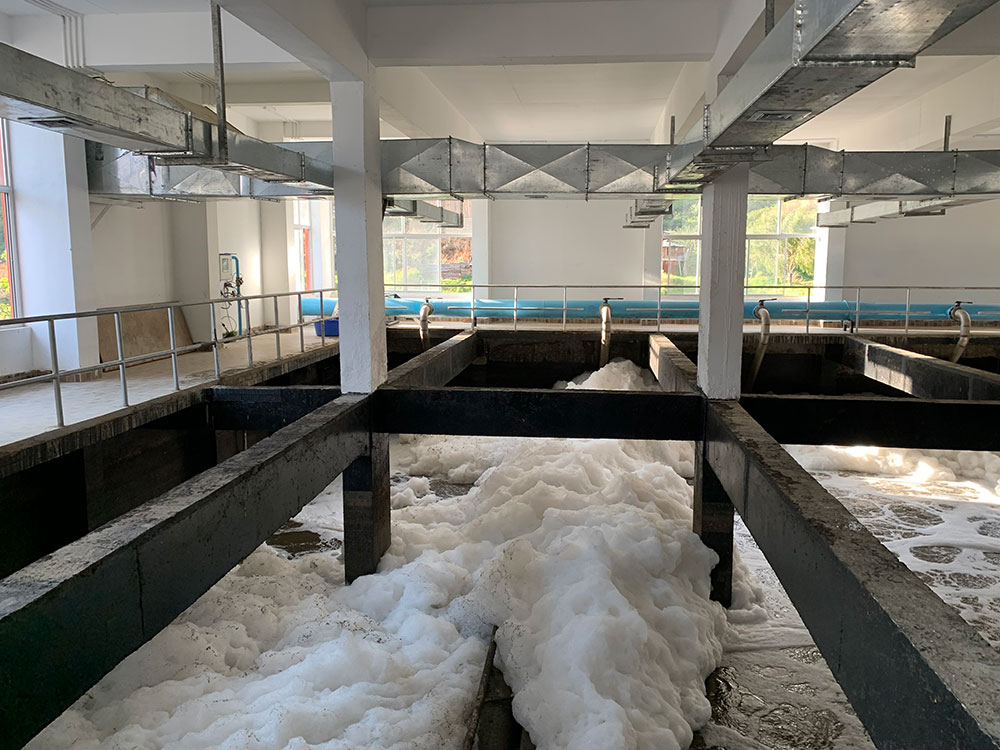Yangyel Lhaden
Babesa sewage plant resumed operations with an automated system on October 22 after remaining suspended for almost seven months.
A sequence batch reactor (SBR) at the 12 million litres-per-day sewage plant in Babesa was suspended until an automated system was developed to operate the plant at its optimum level to treat sewage.
The plant was initially running manually.
The plant could not treat sewage during the three-month trial, which began in December last year, and failed to meet effluent parameters of the sewage treatment plant discharge standards of the National Environment Commission (NEC).
An official from Thimphu thromde said that the plant failed to treat sewage during the second lockdown, as there was no one to run the plant during the 40-day lockdown. “Since then, our focus has shifted to automating the system.”
An automation engineer from India arrived in August and worked on the automation for two months.
An engineer of Techno Fab Engineering Limited, Tashi Topgyal, said that they are hopeful the plant can now treat sewage and meet the discharge standards of NEC. “We have to run the plant for at least five days to test the parameters.”
He said for the next three months, they will study the plant and come up with measures to fix the plant before it is commissioned.
The readings of the plant are shared with chemical engineers in India on a daily basis for remote assistance.
The plant has six cycles to treat sewage.
In the first cycle, called static fill, SBR is filled with raw sewage for almost an hour. In the second cycle, called aerated fill, the plant is supplied with oxygen for bacteria to respire. This cycle lasts for about 70 minutes. In the third cycle, called react, the plant is run for an hour for bacteria to break down sewage. In the fourth cycle, called settle, the treated sewage settles down, and in the fifth cycle, called decant, the plant filters water out from the SBR and the water is treated with chlorine before it flows in the river. In the last cycle, called idle, the remaining sewage is settled until raw sewage is filled again in the SBR and the cycle resumes.
Tashi Topgyal said that with assistance from the chemical engineer, they are studying how long each cycle should last for sewage treatment. “The timing for each cycle is crucial for sewage treatment.”
He said that if the plant does not meet total suspended solids (TSS) standards, they will have to run the sixth cycle for a longer duration. “In SBR, white foam and the discharge water from sewage treatment appears to be clear in aerated stage forms.”
Tashi Topgyal said white foam is a good sign that sewage is being treated, or else the foam will be yellow or greyish. “With clear discharge, we are hopeful it will meet the NEC standards.”
During the first trial, the plant met only two of the five NEC standards: faecal coliform, and pH. The plant did not meet the other three parameters: chemical oxygen demand, total dissolved solids, and TSS.
Tashi Tobgyel said meeting all other parameters depends on post-treatment through cycles, and for TSS, pre-treatment matters. “Most TSS are chili flakes.”
He said that they have modified the grit separator, a component to filter TSS in pre-treatment. “More than 50 percent TSS is filtered through the grit separator.”
The SBR sewage plant construction project, worth more than Nu 76.9 million, began in 2016.


